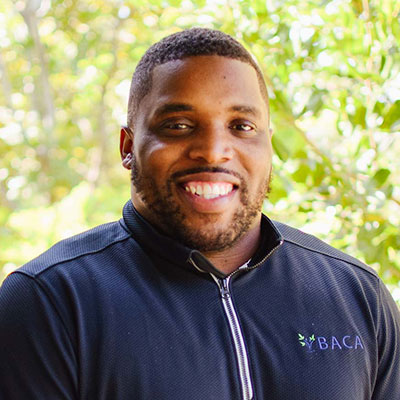If you’re one of the millions of college students in the U.S diagnosed with attention-deficit hyperactivity disorder (ADHD), we bet one of the toughest challenges you face is maintaining the focus it takes to complete a productive study session: if that’s you, have you considered a body double?
No, we’re not talking about a body double like movie stars have for background shots, or stunt doubles to film risky scenes. Yes, a life stand-in would be great: someone to do everything we don’t want to do. but in this case, we’re not talking about getting someone to study, show up to class, or takes tests for you.
What we mean is getting someone to study with you.
We’ll explain.
In the paper “Proposing Body Doubling as a Continuum of Space/Time and Mutuality: An Investigation with Neurodivergent Participants,” researchers define the practice of body doubling as follows:
“Body doubling is using the presence of another person to stay focused on or accomplish tasks.”
There’s almost no research on the topic. While writing this article, our search for credible sources yielded two peer reviewed articles and two master’s theses – and one of those master’s papers was a study that found body-doubling was counterproductive, regardless of ADHD diagnosis.
However, the two peer-reviewed journal articles – one of which we introduce above – finds body doubling is an effective strategy for people with ADHD. The authors of the paper we’ll focus on here realized that, since there’s almost no real research on the topic, there’s not a universally accepted definition beyond the one we already shared.
Therefore, they decided that was their first task: create a definition that would be useful for both future researchers seeking explore the topic, and current clinicians seeking new ways to help their patients diagnosed with ADHD.
Body Doubling: An Operational Definition
Please excuse the jargon.
By operational definition, we mean a definition we can use.
To create a useful definition, the researchers went directly to the source. They created a community-based definition, based on a survey of 220 study participants who use body doubling for ADHD. Most respondents had never heard the term, but indicated they discovered or use the strategy independently and intuitively. Participants indicated body doubling is/involves:
- Having someone in the room
- Or on a call/chat
- To help accomplish a task
- Or be productive
- The other person may be doing a different task
- Or a similar/the same one
- It’s a form of accountability
- It helps you stay on task
Based on this information, the research team arrived at this definition of body doubling:
“Body doubling broadly constitutes intentionally using the presence of someone (in the same room, online, via media) to help start, work on, or accomplish a task (does not have to be work-related) as a form of accountability and/or reminder to stay on task.”
Which aligns with this definition from this source, the master’s thesis we mention above that actually found body doubling to be counterproductive:
“The process of two individuals who occupy the same space, are aware of each other’s presence, and are both independently working on individual tasks.”
And finally, the definitions above agree with and support this ADHD-specific definition published here:
“Body doubling is a productivity tool for people living with ADHD, a mental health disorder that causes challenges with focus and hyperactivity that interferes with daily life.”
Those definitions present a clear and understandable definition of what body doubling is, and why a college student with ADHD might consider using a body double. Next, we’ll address one of the first questions people ask when they hear about the concept of body doubling
Who Can Be a Body Double for College Students With ADHD?
Anyone willing and able can be a body double. Obviously, in this context, for safety and practical reasons, they should be someone familiar, such as a peer or classmate. Those are the only baseline requirements, but these things help:
- The body double should have a task to complete
- If the body double has ADHD, that’s a plus, but not required
- The body double should understand why you want/need a body double
This article from Children and Adults with Attention-Deficit/Hyperactivity Disorder (CHADD) confirms that anyone can play the part of a body double. The most common body doubles are friends, classmates, or coworkers. When thinking about body doubles and how they work, consider this:
The body double doesn’t have to be working on the same or a similar task: they just need to be there and occupied doing something they need to do.
We have one more point to cover about who can be a body double.
If you’re one of the college students out there with ADHD thinking about trying a body double, be realistic about the partner you choose. For some people with ADHD, body doubling backfires, and the body double ends up being a distraction. That’s why we recommend choosing someone in the sweet spot:
- Someone you know who doesn’t make you laugh without trying
- A friend who’s not your go-to confidant for deep personal issues
- Someone who’s not a romantic interest
Yes, someone hilarious, someone you share secrets with, or someone you have a crush on could be a body double, but let’s be clear: they’re not the best choices. The goal of using a body double is productivity, not laughing, working through personal issues, or figuring out how to ask someone out on a date. Therefore, when thinking about a good candidate for your body double, keep your eyes on the prize: staying focused while studying.
Now we’ll switch gears and review the benefits of using a body double.
For College Students with ADHD, How Does Body Doubling Help?
The article “How Body Doubling Helps With ADHD” gives an excellent, 30,000-foot view of how/why body doubling can make life easier for people with ADHD. Big-picture-wise, body doubling makes people with ADHD:
- Choose a task
- Set a time to work on the task
- Be accountable to another person.
For people who don’t have ADHD or know anyone who does, please understand that taking these steps – which may seem simple from the outside – can be a challenge for someone with mild ADHD, extremely difficult for someone with moderate ADHD, and at times, next to impossible for people with severe ADHD.
Here’s how a professional ADHD coach describes the big-picture benefits of body doubling:
“My clients find it greatly helps…productivity…it supports them in setting priorities, breaking down a chosen project/goal into what can be accomplished in 50 minutes, committing to a particular task or tasks, and then having needed accountability for working on – and realizing – their goals.”
This article – ADHD Body Doubling: What It Is and How It Works – offers a good summary of the benefits of body doubling for people with ADHD. Using a body double can:
- Reduce ADHD stigma through shared experience
- Provide real-time modeling of how to stay focused and on-task
- Decrease isolation
- Increase calmness/relaxation
- Establish and improve accountability
- Create incentives stay on-task
- Create incentives to complete tasks
- Provide motivation/inspiration
- Include real-time feedback from the body-double
That’s the case for college students with ADHD looking for new strategies to stay focused while studying. In short, it can help increase productivity and reduce social isolation: those are good outcomes for anyone, and particularly for people with ADHD.
But why is body doubling a thing at all?
Why do we need to know about – and understand – the concept of body doubling?
Because literally millions of college students have ADHD, and they need help.
Prevalence of ADHD in the U.S
In 2024, one thing about ADHD that puzzles people about ADHD is the gradual increase in prevalence, especially among adults. There are several possible explanations, including an increased awareness of and reduction of stigma around neurodivergence, an increase in demand on executive function to compete in society-at-large, and an increased willingness by people to recognize they may have a mental health disorder, paired with an increased willingness to ask for help.
To learn more about recent increases in ADHD prevalence among children and teens, please navigate to our blog and read this article:
How Many Children and Teens in the U.S. Have ADHD?
It’s also important to understand that the executive processes ADHD can impair exist on a continuum. On one end, we see people with robust attention-based skills and a strong ability to complete tasks. On the other end, we see people with impaired ability to focus and decreased ability to complete tasks.
From the continuum perspective, people with ADHD are closer to one end than the other.
Regardless of the reasons for the increases – and how we understand ADHD in general – it’s important for all of us to understand why there’s so much interest in and focus on ADHD in recent years, which means we need to understand the scope of the issue.
Here’s the latest data on ADHD prevalence in the U.S., published by the National Center for Health Statistics Rapid Surveys System and the Centers for Disease Control (CDC):
ADHD Prevalence: Children and Adolescents
By age:
- 4-11: 7.5%
- 12-17: 14.2%
Gender:
- Female: 7.4%
- Male: 13.4%
That data is relevant because it tells us what to expect in the years to come: when these children and adolescents reach college age, body doubling may be a common practice.
ADHD Prevalence: Adults 18+
Total: 6.0%, or 15.5 million
By age:
- 18-24: 21.7%
- 25-29: 62.8%
- 50-64: 10.6%
- 65+: 4.9%
Gender:
- Female: 44.2%
- Male: 55.8%
By race and ethnicity:
- White: 70.4%
- Black: 7.4%
- Hispanic or Latino: 16.6%
- Other: 5.6%
Age at diagnosis:
- Before age 18: 44.1%
- After age 18: 55.9%
Pay special attention to that last figure: over half the adults with ADHD received their diagnosis after age 18. This begs the question: did we miss the diagnosis when they were young, or did they develop ADHD later in life?
We’ll close this section with the latest facts on treatment for ADHD among adults – and a critical point that recent events placed squarely in the foreground of ADHD treatment.
ADHD Treatment in the Past Year: Adults 18+
- None: 36.5%
- Medication and/or counseling: 35.2%
- Counseling only: 13.3%
- Medication only: 15.1%
We’ll say it simply: those numbers should be higher – and that’s why we write articles like this one. We want everyone with ADHD to understand that they’re not alone and that treatment works.
And that critical point?
Last year, supply chain issues made some ADHD medications scarce. Here’s the data:
- 61.8% of adults with ADHD had problems getting their prescription filled because of shortages
- 71.5% of adults taking stimulant ADHD medication had problems getting their prescription filled because of shortages
Adding an effective strategy to manage ADHD symptoms without medication means that if we experience supply chain issues and medication shortages again in the future, college students with ADHD may be less reliant on their medication, and a shortage may not have a significant impact on their most important task: studying.
We’ll close this article with a brief word on ADHD treatment, and a list of helpful resources for finding professional support for ADHD.
Treatment for ADHD
Experts on ADHD indicate that the most effective treatment approach involves a combination of therapy, medication, lifestyle changes, and various forms of specialized support at college and home. Behavioral therapies for ADHD include cognitive behavioral therapy (CBT), mindfulness-based cognitive behavioral therapy (MBCBT), and dialectical behavior therapy (DBT). Medications include both stimulant and non-stimulant medication, lifestyle changes revolve around diet, sleep and exercise, while specialized support most often occurs on-on-one with counselors, therapists, or other mental health professionals.
How to Find Professional Treatment and Support for Attention-Deficit Hyperactivity Disorder
First, call us here at BACA or fill out our contact form: we’ll get back to you quickly.
- The organization Children and Adults with Attention-Deficit/Hyperactivity Disorder (CHADD) maintains this excellent treatment resource page for people with ADHD
- The National Institute of Mental Health (NIMH) has a new publication called “ADHD in Adults: 4 Things to Know”
- The National Alliance on Mental Illness maintains an outstanding resource on ADHD




